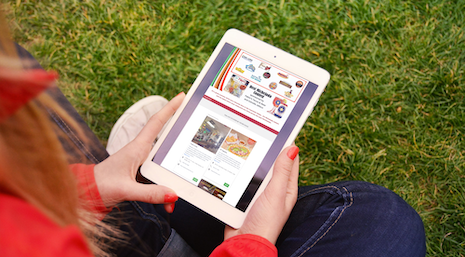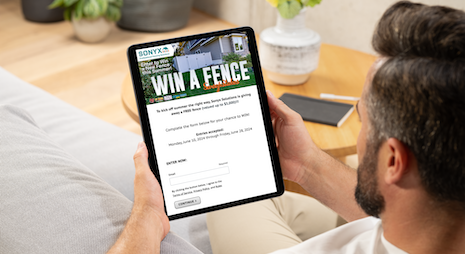Step One – Get Permission
It’s critical to ensure that people who are interested in your content have a simple way to sign up for your newsletters. Be sure to include clear, easy-to-find signup widgets on your website and embedded within relevant content.
Contests and promotions with a simple opt-in are one of the easiest ways to fuel email acquisition. At any given time, you should have at least one list-building promotion running while also being sure to include opt-ins on all of the other promotions you’re running as well.
Beyond widgets and promotions, there are a dozens of other ways to drive signups for your newsletters. We have an entire article listing out other ways to grow your database.

Step Two – Create a Compelling, Actionable Message
Your newsletters are only effective if people are opening them. Creating messages that deliver something meaningful to your subscribers is of utmost importance, and that starts with crafting your readers’ first impression – the from name, subject line, and preheader text.
Many people overlook these three important elements, focusing only on the content of the email itself. But the truth is, your from name, subject line, and preheader text are critical for your user to know whether or not they trust your message and are interested enough to open it.
When it comes to the content of your newsletter, you need to decide whether it will be automated or curated. An automated newsletter can scale with fewer resources and has an institutional voice while a curated newsletter often delivers better engagement, allows for more strategic planning, and is personality-driven.

Step Three – Only Send to an Engaged Audience
Sending to a disengaged audience doesn’t just mean a lot of your emails are going unopened. In fact, these unengaged users are negatively affecting your deliverability. Mailbox providers measure your engagement on many factors, but the majority of them are focused on engagement.
The less engagement your newsletter gets, the less likely it’ll get prioritized in your subscriber’s email inbox. Make sure that you are consistently cleaning out disengaged users from your database. And when at all possible, filter your messages to send to a segmented, targeted list of users.

Step Four – Test Your Assumptions
Testing helps you understand what your audience will respond to and what they prefer. While you may have great open rates already, what if they could be even better?
A/B Testing your subject lines, layouts, and content elements is the perfect way to see what resonates best with your subscribers. But like any good scientist, remember, only test one element at a time to make sure you’re keeping your findings accurate and clear.

Takeaways
You want your newsletter program to be robust, drive results, and deliver success. As you sit down with your team to analyze your current program and prepare to update, see how your program compares with these four key elements:
- Persistent Promotions
- Consider Your Audience
- Engagement is Your Key Measurement
- Test to Improve
Get Your Email Toolkit
Looking for more resources to help you improve your email strategy? We’ve put together Your Ultimate Email Toolkit of interactive worksheets to help you analyze the power of your current email program or get one started from the ground up.







